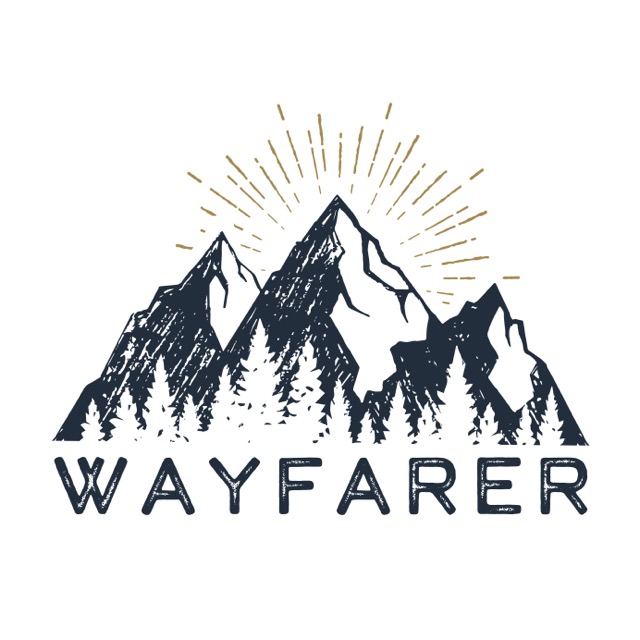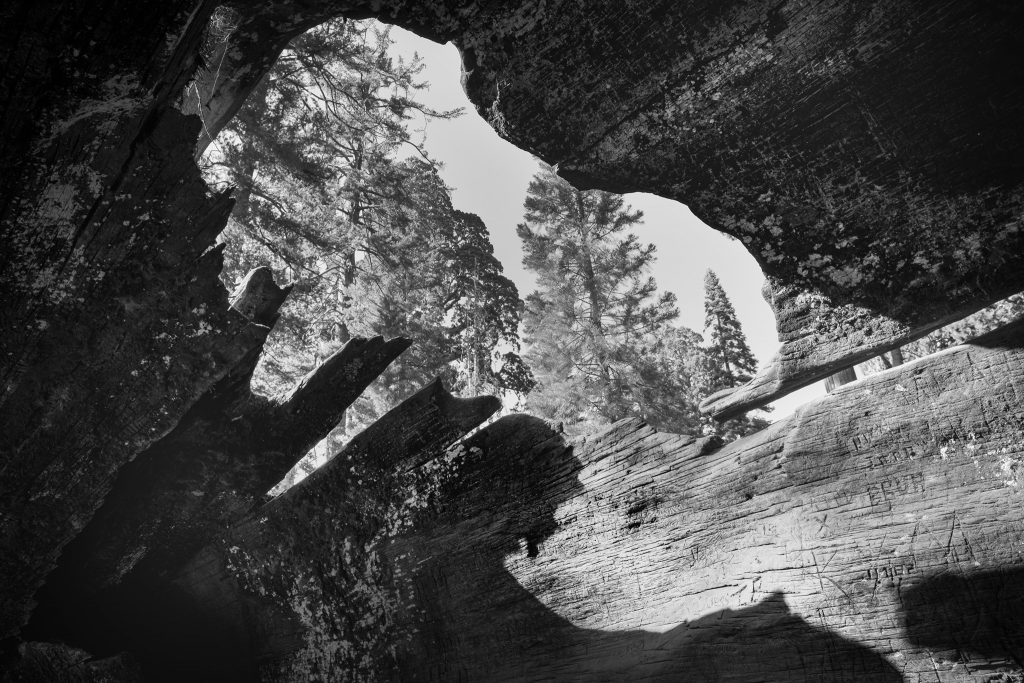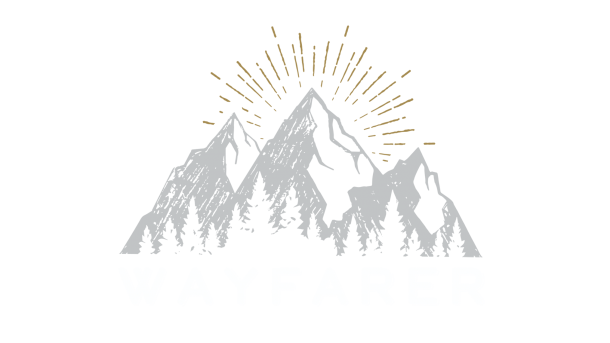A Travel Column by L.M. Browning from the Spring 2021 Special Double Issue
Sequoia National Park,
Sierra Nevada Mountains, California
The sun was setting and the misty blanket of night was rising at the base of the towering Sequoia grove. I’d wandered off the beaten path some time ago, as crowded as it was with day visitors . . . parents. . . children. Years later, most days, the burden of memory isn’t heavy but today was an uneasy day. It was the first time in the entire trip thus far—all 2000+ miles of it from Denver to Three Rivers—where I wished I had children to share the experience with me.
As I walked the path, I found myself “counting” . . . the twins would be three-and-a-half if they were still with us. I haven’t counted in a while, but it still happens from time to time . . . it always will.
Feeling heavy-hearted, I broke away from the trail off into the wild. I pushed through about a half mile or so when I found a perfect black crow feather among a grove of fallen pinecones—the pinecones were as long as my forearm. Crows have been following me since the high-desert of Moab. In native wisdom, the crow represents both positive and negative energies. The crow is often demonized by many Abrahamic religions—cast as omens of death, foreboding, and ill-will—but going back further to the earth-based traditions the crow represents the powerful enduring mystery.
In Cherokee, crow medicine is known as Koga Nvwati. The crow medicine, “gives us the ability to make decisions, open ourselves to change, and experience magic in the world around us. They have known darkness and are willing to guide us through our own in order to bring us to a higher perspective. When a crow appears in your life, it may be that you are at a crossroad.”
Shapeshifter by nature, the crow is said to exist in both the seen and otherworldly realms. They are the harbinger of balance—of law. The vision of a crow symbolizes rebirth and change. Throughout this trip, I’ve felt a strong positive presence with them, bringing a sense, not of something easy but something needed.
I sat for a time and began to feel better. I stuck the feather in my hat and pressed on up the trail to the edges of The Sequoia National Monument and King’s Canyon, where I had another encounter. This time with a young doe. She’d emerged from a sloped wood with a graceful mysterious cadence. I was sitting along the path resting. I kept still, expecting her skittish nature to kick in and send her bounding into the thicket. But she didn’t run. She stopped and stared at me—her huge ears open and alert—her dark eyes wide and kind. I stared back at her and we became wrapped in a moment of stillness. It reminded me of the moment in New Mexico three years ago when, beset in grief, I came upon a herd of wild buffalo.
Lost in time and space, I hardly noticed the doe move towards me. I stood up slowly. I instinctually reached out a hand without any common sense reason to believe she would come to me other than some internal instinct whispering to me that this was not a plain path-crossing with her. My hand outstretched, she reached out and nuzzled me—her soft, warm, wet nose cupped in my palm. She moved away slowly, only to come back—returning her nose to my hand. From the corner of my eye I saw the flicker of a tail as two small young deer rustled. We stood there together only feet apart for over an hour . . . maybe longer, time wasn’t important. What is important is this: What we require to feel whole after life has torn us asunder lies in the wild. I am not the only one to take solace in the landscape. One of the most transformative notions—the National Parks—came out of an inconsolable grief.
The iconic rough-riding image of Theodore Roosevelt is the embodiment of the archetype of the exploration of the American Wilderness. This is a man who, on October 14, 1912, was shot in the chest during an attempted assassination only to carry on with his speech as planned for 90 mins as the bullet remained lodged in his chest muscle and blood soaked into his shirt. His opening remarks to the crowd were, “Ladies and gentlemen, I don’t know whether you fully understand that I have just been shot, but it takes more than that to kill a Bull Moose.”2 What we may forget is that this indomitable force of a man who was undeterred by bullets, battle, bears, war . . . was utterly gutted by the loss of the women central to his life in the years before.
During his second year at Harvard University, Theodore was bidden home by a telegram to find his father had died due to intestinal cancer. The date was February 9, 1878. His father had been his best friend, his mentor, and his compass of character. Theodore was left depressed and aimless as he returned to Harvard in the wake of this inconsolable loss. He eventually pulled himself out of the depression by leaning into his studies even harder.
The death would continue to come. Ultimately, Roosevelt was a shattered man having suffered the inconsolable loss of both his wife and mother on the same day on February 14, 1884. When he arrived on the doorstep of his New York City home at 6 West 57th Street, after being called back by telegram from Albany where he worked as a New York State Assemblyman, he arrived to his brother’s ominous warning, “there is a curse on this house.”3 Within hours his wife, Alice, would die at the age of 22 after complications from the birth of her and Teddy’s daughter and his mother, Martha, had pass away just eleven hours earlier at the age of 48 from what is to believed to be typhus.
At the end of this calamitous day, Roosevelt drew a dark X through the day in his daily journal with the heavy conclusion: “The light has gone out of my life.”
This day of death cast a shadow across the breadth of Roosevelt’s life that he would never escape. To distract himself from the reality waiting there in the silence, Roosevelt poured himself into his work with a schedule so thick hardly giving himself a moment to think of anything else, which I suspect is just the way he wanted it.
To recover from the death of his father, Theodore had buried himself in his studies. To recover from the death of his beloved wife and mother, Theodore had buried himself in his work as an assemblyman. When all that still didn’t ease him, he (seemingly) gave up the political career he had built and moved to South Dakota—to the tall grass sea of prairie to forge a life as a cattleman.
In the years to come Roosevelt, like all hollowed out souls would come to an uneasy truce with his losses but never fully heal. However, from within the dark space—after all the light was extinguished from his life—meaning would come. The National Park Service was born, in great part, as a grieving president found solace in the supreme solitude and awe-striking beauty of the wild.
On May 15, 1903, the perpetually-bereaved President Roosevelt arrived by train to Raymond station— the gateway of Yosemite to a mountain-dwelling conservationist by the name of John Muir for a three-day expedition into the Sierra Nevada.
Muir, troubled over the eradication of the western landscapes, invited President Roosevelt to camp in Yosemite National Park. After his trip, Roosevelt remarked: “It was like lying in a great solemn cathedral, far vaster and more beautiful than any built by the hand of man.”
Over this three-day excursion, these two grandfathers of conservation sat around the fire sipping black coffee talking privately of matters unrecorded; the ripples of which would go on to become the National Park Service and the National Forest Service. The mark grief left on Theodore Roosevelt’s life was ultimately reflected on the map of the United States before and after his Presidency as, within his time in office, he managed to bring over 230,000,000 acres of wild land into Federal protection and brought conservation to a national stage.
This is an excerpt from the forthcoming memoir, Wild Silence: Field Notes on Grief, Madness, and the Transcendent Nature of the Landscape. L.M. Browning is a TEDx Talker, photographer, and an award-winning author of twelve books. Balancing her passion for writing with her love of learning, Browning sits on the Board of Directors of the Independent Book Publishers’ Association and a Fellow with the International League of Conservation Writers. She has a BA from Harvard University. Learn more at www.lmbrowning.com



